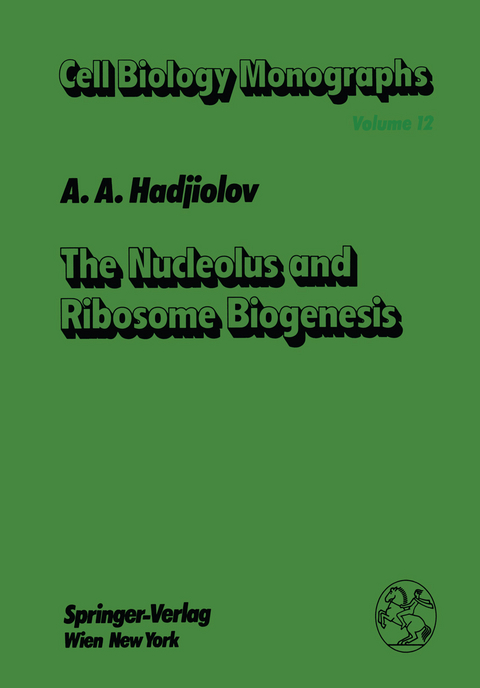
The Nucleolus and Ribosome Biogenesis
Springer Wien (Verlag)
978-3-7091-8744-9 (ISBN)
I. Introduction.- II. Ribosomal Genes.- II. 1. Definitions.- II.2. Ribosomal RNA Genes.- II.4. Ribosomal Protein Genes.- II.5. Synopsis.- III. Transcription of Ribosomal Genes.- III. 1. Components of the Transcription Complex.- III.2. The Transcription Process >.- III.3. Transcription of 5 S rRNA Genes.- III.4. Transcription of r-Protein Genes.- III.5. Synopsis.- IV. Maturation of Preribosomes.- IV. 1. Structure of Primary Pre-rRNA.- IV.2. Pre-rRNA Maturation Pathways.- IV. 3. Preribosomes: Structure and Maturation.- IV. 4. Synopsis.- V. Molecular Architecture of the Nucleolus.- V. 1. Introduction.- V.2. Nucleolus Organizer.- V.3. Fibrillar and Granular Components.- V.4. The Nucleolus and Other Nuclear Structures.- V.5. The Nucleolar Matrix.- V.6. Macromolecular Constituents.- V. 7. Outline.- VI. Regulation.- VI. l. General Considerations.- VI.2. Transscriptional Control.- VI.3. Posttranscriptional Control.- VI.4. Autogeneous Regulation of Ribosome Biogenesis in Eukaryotes: A Model.- VI.5. Synopsis.- VII. Ribosome Biogenesis in the Life Cycle of Normal and Cancer Cells.- VII. 1. Nucleologenesis and Nucleololysis.- VII.2. Inhibition of Ribosome Biogenesis.- VII.3. Growth Transitions.- VII.4. Senescent and Cancer Cells.- VII.5. Synopsis.- References.
| Erscheint lt. Verlag | 30.12.2011 |
|---|---|
| Reihe/Serie | Cell Biology Monographs |
| Zusatzinfo | XII, 272 p. |
| Verlagsort | Vienna |
| Sprache | englisch |
| Maße | 170 x 244 mm |
| Gewicht | 494 g |
| Themenwelt | Naturwissenschaften ► Biologie ► Biochemie |
| Naturwissenschaften ► Biologie ► Mikrobiologie / Immunologie | |
| Naturwissenschaften ► Biologie ► Zellbiologie | |
| Schlagworte | Biology • Cell Biology • DNA • enzymes • Membrane • Molecular Biology • molecular genetics • primary structure • Protein • Protein synthesis • Regeneration • RNA • synthesis • transcription |
| ISBN-10 | 3-7091-8744-3 / 3709187443 |
| ISBN-13 | 978-3-7091-8744-9 / 9783709187449 |
| Zustand | Neuware |
| Haben Sie eine Frage zum Produkt? |
aus dem Bereich


